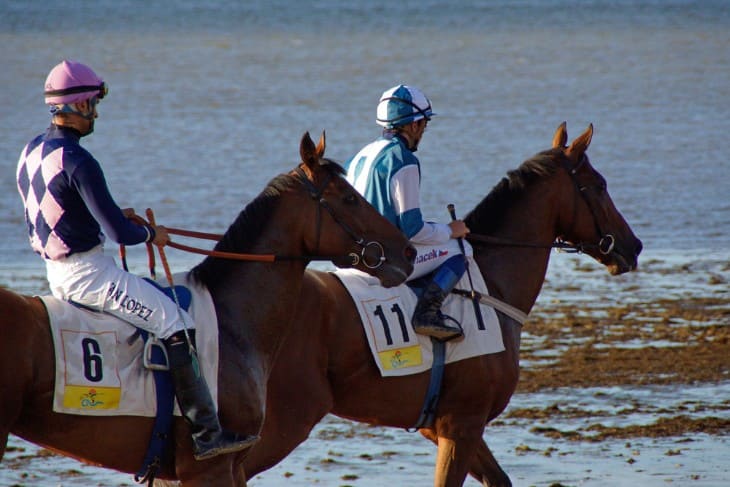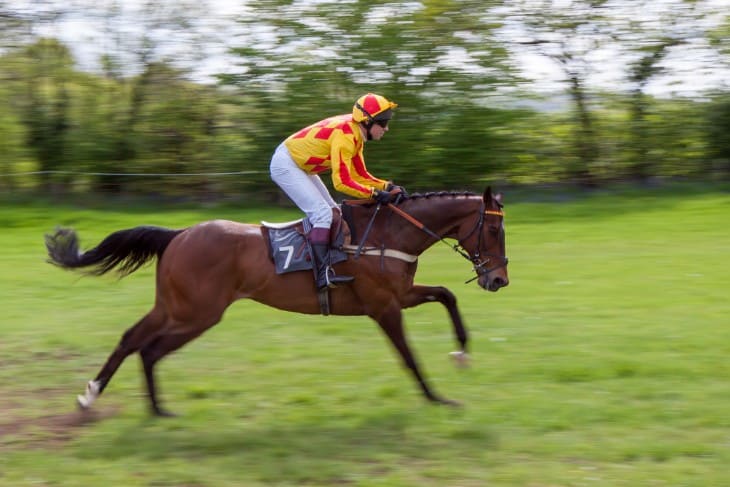- Key Characteristics of Successful Claiming Racehorses
- Understanding the Rules and Regulations of Claiming Races
- Evaluating a Horse's Physical Condition for Claiming Races
- The Role of Pedigree in Selecting Claiming Racehorses
- Training and Preparation Strategies for Claiming Racehorses
- Financial Aspects: Cost vs. Benefit in Claiming Races
- Analysing Past Performance Records in Claiming Race Selection
- Claiming Race Strategies: From Selection to Race Day
- Case Studies: Successful Claiming Racehorses and Their Journeys
- Conclusion
Claiming races represent a unique category within horse racing, offering a distinct approach to horse ownership and competition. In these races, every horse running is up for sale at a predetermined price before the race begins. This system aims to create a more level playing field, as horses are entered into races where their value is similar to that of their competitors. The concept behind claiming races is simple: it prevents owners from entering a horse that is too good for the level of the race, as doing so risks losing the horse for a price less than its actual worth.
The process of a claiming race begins when an owner enters their horse at a specific claiming price. Interested parties can then submit a claim for the horse at that price before the race. If multiple claims are made, a random draw determines the new owner. Importantly, the outcome of the race does not affect the sale of the horse; the original owner receives any prize money won, but the horse goes to its new owner after the race, regardless of its performance. This system encourages fair competition and strategic decision-making among owners and trainers.
Key Characteristics of Successful Claiming Racehorses
Identifying the right horse for a claiming race involves assessing various characteristics that can indicate a horse's potential for success. While no single factor guarantees victory, certain traits are commonly observed in successful claiming racehorses:
- Consistency in Performance: Horses that consistently perform well, showing reliability in different conditions, are often sought after in claiming races. Their track records provide a glimpse into their potential future performance.
- Adaptability: The ability to adapt to different tracks and conditions is crucial. A horse that can perform well on various surfaces and under varying weather conditions is highly valued.
- Physical Condition: A horse in peak physical condition is more likely to perform well. Potential buyers often look for signs of good health and fitness, such as a glossy coat, a strong build, and alertness.
- Age and Experience: While younger horses may have untapped potential, experienced horses often bring a proven track record. The age of a horse can influence its performance and suitability for specific claiming races.
- Temperament: A horse's temperament can significantly impact its performance. Horses that remain calm under pressure and are responsive to their jockeys often have an edge in the competitive environment of a race.
Evaluating these characteristics requires a keen eye and a deep understanding of horse racing dynamics. Successful claiming race participants often rely on a combination of thorough research, expert advice, and their own experience when selecting horses.
Understanding the Rules and Regulations of Claiming Races
Navigating the rules and regulations of claiming races is crucial for participants to ensure fair play and the well-being of the horses. Each racecourse or horse racing jurisdiction often has its own set of rules, but some common principles are widely observed. Firstly, the price for which a horse is entered in the claiming race is determined by the owner and trainer, reflecting the horse's perceived value and competitive level. This price is publicly available before the race, ensuring transparency in the claiming process. Secondly, claims must be made before the race starts, typically in a designated time window. These claims are confidential, preventing any potential bias or strategic play during the race.
Another important regulation is the transfer of ownership. Once a claim is made and the race is run, ownership of the horse transfers to the claimant, regardless of the horse's performance in that race. This rule underscores the inherent risk and strategy involved in claiming races: buyers must assess the horse's potential and value without the certainty of race outcomes. Additionally, to protect the welfare of the horses, there are often rules regarding their fitness and health. Horses deemed unfit for racing are not allowed to participate, ensuring the safety and integrity of the sport.

Evaluating a Horse's Physical Condition for Claiming Races
The physical condition of a horse is a paramount factor when considering a horse for claiming races. A horse in peak health and condition is more likely to perform well, making it a more desirable claim. When evaluating a horse’s physical condition, several key aspects are considered:
- Musculature and Build: A well-proportioned body with a strong, muscular build indicates good health and fitness. Look for a horse with a robust physique, indicative of proper training and nutrition.
- Coat and Appearance: A shiny, smooth coat is a tell-tale sign of good health. Horses that appear well-groomed, with bright eyes and an alert demeanor, often stand out as well-cared-for and healthy.
- Gait and Movement: Observing a horse's movement can reveal much about its physical condition. A fluid, effortless gait suggests soundness and agility, while any signs of lameness or stiffness might indicate underlying health issues.
- Breathing and Stamina: Pay attention to the horse's breathing during exercise and its recovery post-workout. Horses with good stamina and efficient respiratory function are typically more successful in races.
- Veterinary Records: Reviewing a horse's medical history is essential. Records of regular check-ups, vaccinations, and any treatments provide insights into the horse’s health status and medical history.
These physical assessments, combined with a horse’s racing history and potential, help in making informed decisions in the claiming process. It's a blend of art and science, requiring experience and knowledge to discern the subtle signs that indicate a horse's readiness for competition.
The Role of Pedigree in Selecting Claiming Racehorses
The pedigree of a horse plays a significant role in its potential for success in claiming races. Pedigree refers to a horse's ancestry, tracing its lineage back through generations of racehorses. This genetic heritage can provide valuable insights into a horse's inherent abilities and tendencies. Horses descending from a lineage of successful racehorses are often presumed to inherit the qualities that made their ancestors successful, such as speed, stamina, and temperament. When selecting a horse for claiming races, savvy buyers and trainers closely examine the horse’s pedigree, looking for ancestors who have excelled in similar race conditions or distances.
However, pedigree analysis is not an exact science. While a distinguished lineage can be indicative of potential, it does not guarantee success on the track. Other factors, such as training, physical condition, and the horse's individual characteristics, play equally crucial roles. Therefore, pedigree should be considered in conjunction with a horse's physical and behavioural attributes, training history, and race performance. This holistic approach to selection allows for a more accurate assessment of a horse’s potential in claiming races.
Training and Preparation Strategies for Claiming Racehorses
Effective training and preparation are key to maximising a horse's performance in claiming races. Each horse is unique, requiring a tailored approach to training and care. Here are some strategies commonly used in preparing horses for claiming races:
- Tailored Training Regimen: Develop a training program that suits the individual horse's needs, considering factors such as age, physical condition, and race history. This may include a mix of speed work, endurance training, and recovery periods.
- Nutrition and Diet: Proper nutrition is essential for maintaining a horse's health and peak performance. A balanced diet, supplemented with necessary vitamins and minerals, ensures the horse has the energy and stamina needed for racing.
- Regular Health Check-ups: Frequent veterinary check-ups are crucial to monitor and maintain the horse's health. This includes routine examinations, vaccinations, and addressing any health concerns promptly.
- Mental Conditioning: Mental well-being is as important as physical fitness. Training should include techniques to keep the horse calm and focused, such as exposure to different environments and practicing loading into starting gates.
- Race-Specific Preparation: Prepare the horse for the specific conditions of the upcoming race. This includes acclimatising to the race track, familiarising with the race distance, and simulating race day conditions during training.
Adapting these strategies to each horse's unique characteristics and needs is vital. The goal is to ensure the horse is physically and mentally prepared for the challenges of claiming races, thereby increasing its chances of success.
Financial Aspects: Cost vs. Benefit in Claiming Races
The financial considerations in claiming races are a critical aspect for owners and trainers. The primary cost involved is the claiming price, which is the amount required to purchase a horse entered in a claiming race. This price is set based on the horse's perceived value and racing ability. Owners and trainers must weigh the potential return on investment when deciding whether to claim a horse. This includes not only the immediate cost of the claim but also the ongoing expenses of training, stabling, and veterinary care.
The benefit side of the equation involves potential earnings from race winnings and the horse's value if it performs well in subsequent races. A well-chosen claim can lead to significant financial returns if the horse proves successful in future races. However, there is inherent risk, as the horse's future performance can be unpredictable. This financial balancing act requires astute judgement and a thorough understanding of horse racing economics. Owners and trainers need to assess each horse's potential for improvement and the likelihood of earning back the investment through race winnings or resale value.
Analysing Past Performance Records in Claiming Race Selection
Evaluating a horse's past performance is a fundamental step in selecting a horse for claiming races. This analysis provides insight into the horse's abilities and potential for future success. Key factors to consider when examining past performance records include:
- Race History: Look at the horse's racing history, including the number of races entered, placements, and the types of races. This can indicate the horse's experience level and consistency.
- Performance Trends: Assess whether the horse's performance is improving, declining, or stable. This helps in predicting future performance and identifying horses with potential for improvement.
- Competition Level: Consider the level of competition the horse has faced. A horse consistently racing against strong competitors may have untapped potential in lower-level claiming races.
- Race Conditions: Analyse how the horse performs under various conditions, such as different track surfaces, distances, and weather conditions. This helps in selecting horses suited to specific race environments.
- Jockey and Trainer History: The horse's performance with different jockeys and under various trainers can provide insights into its adaptability and potential under new management.
This detailed analysis helps in making informed decisions, reducing the risks inherent in the claiming process. By thoroughly evaluating a horse's past performance, owners and trainers can better identify horses with the right combination of experience, ability, and potential for success in claiming races.

Claiming Race Strategies: From Selection to Race Day
Formulating a strategy for success in claiming races involves several key steps, from selecting the right horse to executing a race day plan. Here are some essential strategies employed:
- Horse Selection: Carefully choose a horse based on its physical condition, performance history, and suitability for the specific race. Consider factors such as the horse's age, experience, and adaptability to the race conditions.
- Race Planning: Develop a race plan tailored to the horse's strengths. This includes deciding on the optimal position in the race, the pace, and how to respond to different race scenarios.
- Training Approach: Tailor the training regimen to prepare the horse for the specific challenges of the upcoming race. This can involve adjusting the intensity of workouts, focusing on specific skills, and ensuring the horse peaks at the right time.
- Pre-race Preparation: Ensure that the horse is in optimal condition on race day. This includes final workouts, ensuring proper nutrition and hydration, and managing any pre-race nerves or stress.
- Race Execution: On race day, execute the race plan effectively. The jockey should be briefed on the strategy, adapting as needed based on the race's progress and the horse's condition.
Each step in this strategy requires careful consideration and coordination between the owner, trainer, and jockey. Successful execution of these strategies can significantly enhance a horse's chances of success in claiming races.
Case Studies: Successful Claiming Racehorses and Their Journeys
Exploring real-world case studies of successful claiming racehorses provides valuable insights into the dynamics of claiming races. These examples highlight the importance of strategic claiming, training, and management in achieving success. Let's delve into a few notable real-life case studies:
- Seabiscuit: Perhaps one of the most famous racehorses in history, Seabiscuit's journey began in claiming races. Initially considered an underperformer, Seabiscuit changed hands multiple times before being claimed by trainer Tom Smith and owner Charles Howard. Under their guidance, Seabiscuit transformed into a racing legend, demonstrating that with the right training and management, a horse can exceed all expectations, even after a humble beginning in claiming races.
- Charismatic: This horse's journey is another testament to the potential of claiming racehorses. Charismatic ran in claiming races early in his career but was not claimed. He later went on to win the Kentucky Derby and the Preakness Stakes in 1999. His story underscores the fact that horses competing in claiming races can possess significant, often unrecognised, potential.
- Lava Man: Originally claimed for $50,000, Lava Man turned out to be an extraordinary investment. He went on to win multiple Grade 1 stakes races, earning millions in purse money. His success story is a prime example of how a well-calculated claim can lead to remarkable achievements in the racing world.
- Stymie: Claimed for just $1,500 as a two-year-old, Stymie went on to become one of the top earners of his time, amassing over $900,000 in winnings. His transformation from a low-level claimer to a racing legend exemplifies the potential for significant returns on a relatively small investment in the claiming race circuit.
These case studies illustrate the diverse paths and potential of horses within the claiming race system. They highlight how a combination of strategic claiming, effective training, and good management can uncover and develop the latent talents of racehorses, leading to unexpected and remarkable success stories.
Conclusion
In conclusion, success in claiming races requires a combination of knowledge, strategy, and adaptability. Understanding the fundamentals of claiming races, including the rules and financial aspects, is essential. Evaluating a horse's physical condition, pedigree, and past performance provides a solid foundation for making informed decisions. The roles of the trainer and jockey are crucial in preparing and guiding the horse to success. Implementing effective strategies from selection through to race day is key to maximising a horse's potential.
The case studies of successful claiming racehorses illustrate the importance of strategic decision-making and the ability to identify and harness a horse's latent potential. Each horse's journey is unique, and success often lies in recognising and nurturing these individual qualities. By applying these insights and strategies, participants in claiming races can enhance their chances of success, making the most of the opportunities these races provide.
For more information:








